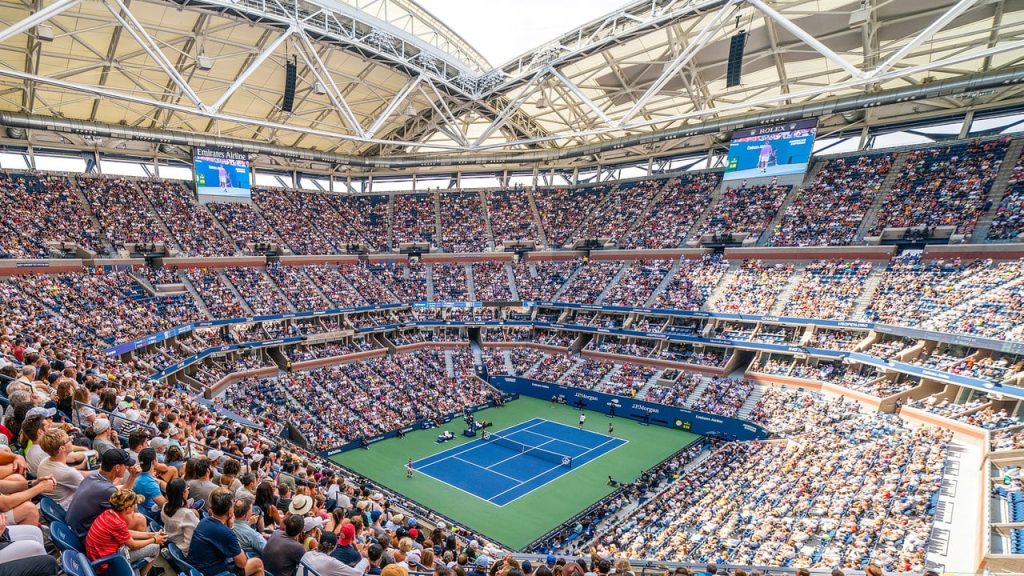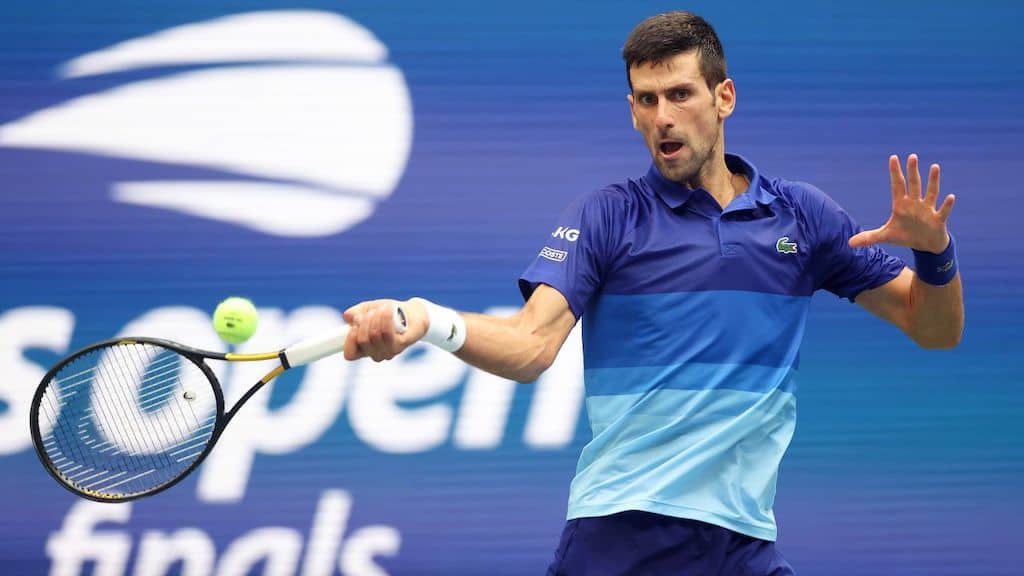Table of Contents
The 2022-23 tennis season is well underway, and US Open tennis is quickly approaching. The French Open at Roland Garros is in the rearview. This means we’re through the first two of four Grand Slams in the annual ATP & WTA schedules.
Wimbledon is currently, taking place at the All England Lawn Tennis and Croquet Club from July 3 to 16, and then it’s the US Open at the USTA Billie Jean King National Tennis Center.
Evolution of the US Open Tennis Championship
A hardcourt tournament, the US Open begins on the last Monday of August every year, although it hasn’t always been the last of the four Grand Slams on the calendar. This has only been the case since 1987.
US Open tennis is one of the oldest tournaments in the world, having first been played in 1881. At this point it was known as the U.S. National Championship and played on grass courts. Richard Sears won the inaugural tournament, while Ellen Hansell won the first-ever women’s draw in 1887.

Sears leads all players with seven titles, while Jimmy Connors, Pete Sampras, and Roger Federer are tied with the most wins (5) in the Open Era. Chris Evert and Serena Williams have the most wins (6) among women in the Open Era.
ATP US Open Tennis Odds
(odds subject to change)
- Novak Djokovic +137
- Daniil Medvedev +275
- Carlos Alcaraz +350
- Nick Kyrgios +900
- Jannik Sinner +1000
- Stefanos Tsitsipas +1200
- Alexander Zverev +1200
- Capser Ruud +1600
- Holger Rune +1600
- Matteo Berrettini +2500
WTA US Open Tennis Odds
(odds subject to change)
- Iga Swiatek +250
- Aryna Sabalenka +700
- Elena Rybakina +900
- Jessica Pegula +1200
- Ons Jabeur +1400
- Coco Gauff +1600
- Mirra Andreeva +1600
- Caroline Garcia +2000
- Barbora Krejcikova +2000
- Maria Sakkari +2200
Betting Tips for the 2023 US Open
Past Champions
It’s definitely helpful knowing past champions and players who have had success under the bright lights at Arthur Ashe Stadium. With that said, the US Open is the hardest tournament to win in back-to-back years.
This is because the hard court is the most neutral of courts, meaning it doesn’t cater to a particular playing style like the grass courts at Wimbledon or the clay courts at Roland Garros.
Federer won five years in a row from 2004 to 2008, but no man has since won in back-to-back years. Carlos Alcaraz, last year’s winner, has as good of a chance as any player to repeat as champion. That’s reflected in his US Open tennis outright odds of +350, third to only Daniil Medvedev (+275) and Novak Djokovic (+137).
It has been a similar situation for the women.
Serena Williams won three in a row from 2012 to 2014, but no woman has since won in consecutive years. Iga Swiatek, last year’s champion, has the shortest odds (+250) to win this year’s tournament ahead of Aryna Sabalenka (+700) and Elena Rybakina (+900).
The Surface Does Matter
While the hard court is a more neutral surface, there are some players who perform better on hard courts. You can easily look up a player’s career and season records on specific surfaces. There are many sites that track this information.
If you’re betting on a quarter-final US Open match between Felix Auger-Aliassime and Jannik Sinner, for instance, simply Google “Player X + hard court record,” and you’ll find results. You’ll see that Auger-Aliassime has won 62 percent of his matches on hard court with four career titles. Sinner, meanwhile, has a 71.3 percent winning percentage on hard court with six titles, so he would have the clear advantage.
Recent Season Performance
Players won’t just automatically return to form on a particular surface if they’ve been struggling during the season. That’s why it’s also important to look at their overall season performance as well as how they’ve been playing in the last few tournaments.
Like many other sports, tennis can be streaky in that players go through hot and cold streaks throughout the season. You might favor a player who is 29-8 overall. But that doesn’t tell the whole picture. They might be 4-4 in their last eight matches and dealing with injuries or other issues.
As players head towards US Open tennis, pay particular attention. Tournaments getting closer to the US Open will be played on similar courts. We touched on the importance of factors in our how to bet on tennis article. It may help you to check it out.
Head-to-Head Can Be Key With US Open Tennis
When you’re betting on individual matches, knowing the history between the two players is integral. Regardless of the surface, playing style, or recent performances, some players simply have other players’ numbers. Going back to the Sinner vs. Auger-Aliassime example, the Italian is clearly a better hard court player than the Canadian, but Auger-Aliassime has won both of the matches they’ve played.
Auger-Aliassime beat Sinner on clay and on hard court in 2022, so he would likely enter the match with a psychological advantage. Again, you can easily look this up as several sites track the information. Some even provide additional info such as sets and games won, total aces, and total double faults.
Injuries
Whether you’re placing an outright bet or wagering on a match, it’s imperative that you look up any and all relevant news for the players involved. This can’t be stated more considering it’s US Open tennis action.
Grand Slams are long and grueling challenges. Remember men play best of 5. Players often spend more than 15 hours on the court if they advance into the later rounds. Some players also play doubles and/or mixed doubles.
Line Shopping – Find the Best US Open Tennis Odds
This is a general rule that applies to betting in all sports and across all matches. It can be especially helpful when betting on tennis. Typically, books might only have slight discrepancies in their odds for major sports, but the swings can be major in tennis.
Take the French Open, for example. Swiatek, the favorite to win, advanced to the quarter-finals in a walkover after Lesia Tsurenko was forced to withdraw due to injury. It was unlikely Tsureno was going to pull off the upset, but if she did, the book at which you placed a wager on her would have made a huge difference in your payout.
One book, for instance, had her as a +700 underdog, while another had her at +1400. That’s a $700 difference in profit on a $100 bet. You’re basically throwing away potential profit if you don’t line shop.





